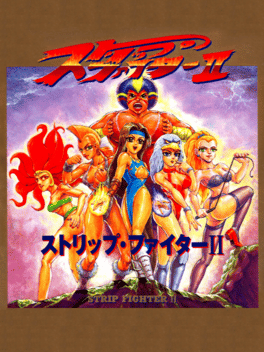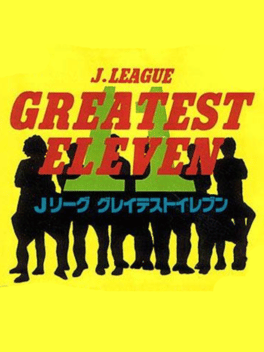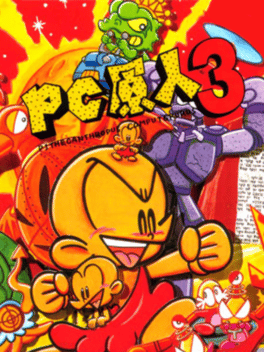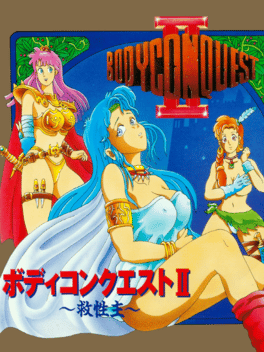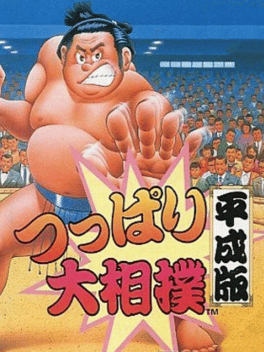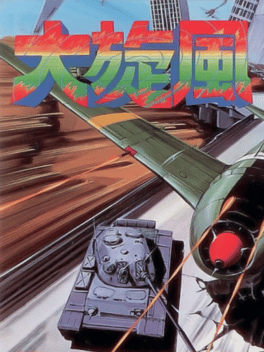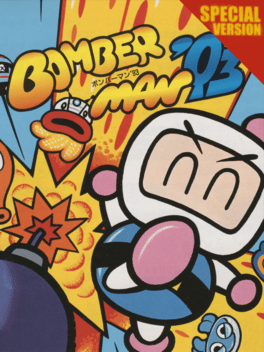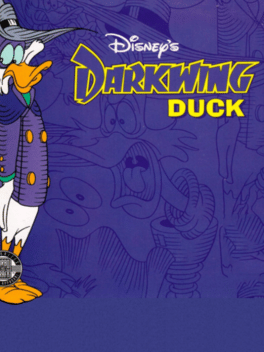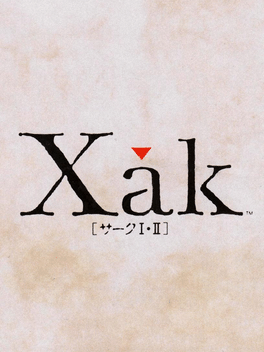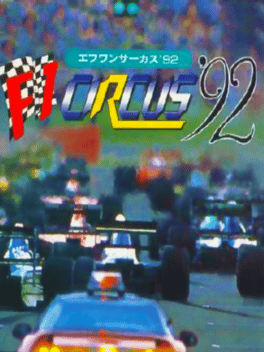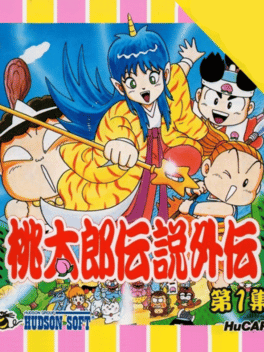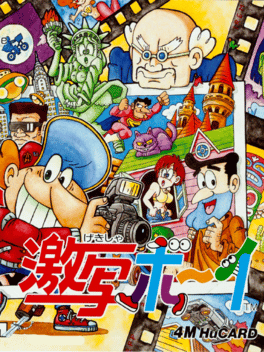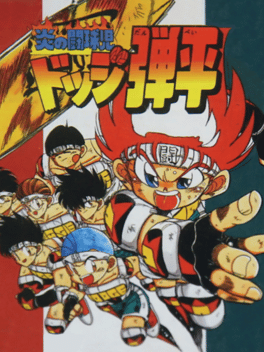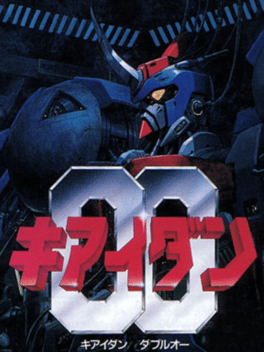New Turbografx 16 Pc Engine Games - Page 2
-
Strip Fighter II
1993
Strip Fighter II
1993
Six fighters from around the world fight for supremacy and the prestige of being the strongest and sexiest fighter ever to grace the arena. With special moves and beautiful women, Games Express delivers the most beautiful fighter to PC Engine. -
Kyuukyoku Mahjong II
1993
-
Power League '93
1993
Power League '93
1993
AKA: パワーリーグ'93. The most successful baseball game franchise on PC-Engine. The year 1993 version featured Hideo Nomo. -
J.League Greatest Eleven Soccer
1993
Soccer game released in 1993 for the PC Engine. J.League Greatest Eleven is a soccer game for the PC Engine published by Nichibutsu/Nihon Bussan. Despite the similar name, it has no relation to Konami's J-League Winning Eleven series. The game features the Japanese soccer league's ten teams from its inaugural 1993 season. There's an exhibition mode with support for four players and a league mode where 1 or 2 players can face off against the computer. The game also offers an option to play with four human players, but only in the exhibition mode. -
PC Kid 3
1993
-
PC Genjin 3 Special
1993
-
BodyConQuest II: Kyuuseishu
1993
The story of this game is rather simple: the world is in peril, as the evil witch Topaz sends her seductive minions to terrorize the wilderness, plotting to overthrow the rightful king and conquer the world. A young prince is born, who is destined to be the one who slays Topaz. His first quest is to retrieve a magical armor which is essential for the victory. But the evil sexy female demons will do everything in their powers to stop the hero. -
Tsuppari Oozumou: Heisei-han
1993
An enhanced re-release of the 1987 Tsuppari Oozumou game for Famicom. -
Dai Senpu
1993
Dai Senpu
1993
Daisenpū is a vertical shooter by Nec Interchannel and conversion of the arcade game of the same name (also known as Twin Hawk) originally released by Toaplan in 1989. In the year 193X, country R is overwhelmed by hostile enemy forces and the small oasis town 'S' is the main target of the attack. A handful of survivors escape to the jungle and start working on a counter attack - but they are soon discovered and are now running out of time, and they must launch the Daisenpū squadron before it is fully operational. The player takes control of a fighter plane and must fly deep into enemy territory, attack ground targets such as tanks, turrets and warships (the game curiously doesn't feature any flying enemies and no obstacles to fly into, beside enemy bullets). The plane starts equipped with a limited double-shot machine gun that can be slowly upgraded throughout the game by collecting power-pods left behind by small trucks. But the originality of Daisenpū lies elsewhere - the player can call a small squadron of si -
Bomberman '93 Special
1993
A very limited release to this game that features eight arenas for multiplayer Bomberman blast action. It was produced for the Osaka game event so players could battle it out. -
Disney's Darkwing Duck
1992
Darkwing Duck is a video game for the TurboGrafx-16 console. It was designed by Interactive Designs and Radiance Software. It was published by Turbo Technologies Inc. in 1992. -
Ghost Manor
1992
Ghost Manor
1992
A platformer in which the player controls Arthur, the neck-bearded hero, in a quest to save his village from an evil force. With an earth-shattering explosion, horror from another dimension grips your once peaceful town. Gristly creatures prey on the innocent. The dead rise to roam the streets. All resistance falls! But hey, no problem, you have a plan! Find the secret passage to their mansion stronghold and battle past the zombies and ghouls. Now get your axe, because it's way full of demons and ghastly surprises! Ride the awesome Skull Slammer and search for their leader, the hideous Orb gamut. Discover his weakness and be a hero. If you don't, you'll be dust. -
Xak I + II
1992
Xak I + II
1992
Xak I & II is a re-release of Xak and Xak II, a fantasy role-playing video game series Xak developed and published by the Japanese software developer MicroCabin and Telenet Japan's development team Riot. This set contains both the first two Xak series games back-to-back on one complete Super Cd-Rom^2 with enhanced graphics and sound. In a similar style to Ys Books I & II, also for the PC-Engine system, Xak II, the second game in the series picks up immediately as the first game concludes. -
F1 Circus '92
1992
F1 Circus '92
1992
A Formula One racing game for the PC Engine. The last of the F1 Circus games to be released for the system. F1 Circus '92, sometimes known as F1 Circus '92: The Speed of Sound, is a racing game for the PC Engine and part of Nichibutsu's F1 Circus series. It is the fourth and last game in the series to be released on the PC Engine platform, and the seventh game in the series overall. Like its predecessors, it is officially licensed by the distributors of Formula One in Japan, and also has the rights to use the real names of teams/drivers. The game again focuses on top-down races that move at great speed and require a lot of memorization and careful driving. The player can easily be forced to retire from the race early if they take too much damage from collisions with the walls or other drivers. There's a strong customization element as well, and the player can choose to play a Special mode that includes dialogue with NPCs between races. -
Momotaro Densetsu Gaiden: Dai-1-Shu
1992
The PC-Engine port of the Game Boy game under the name of Momotaro Densetsu Gaiden. A spin-off of Hudson's Peach Boy RPG series that focuses on three side characters instead. The game switches focus from Momotarou to three extra characters, each has their own distinct campaign to play through. One follows a standard RPG route of a hero's journey, another involves the princess of the kingdom of demons as she attempts to uncover an attack on her father's throne with a band of allied monsters, and the third involves a thief who steals money from monsters and gives it to beggars. Each campaign follows the core gameplay of the series: overworld exploration and turn-based combat. -
Kyuukyoku Mahjong
1992
-
Downtown Nekketsu Koushinkyoku: Soreyuke Daiundoukai
1992
Reihou Academy Student Council proposed a friendly athletic meet-up to apologize for the wrongdoings done by student council president Yamada. However, Toudou Mamoru, the new student council president who has been entrusted with the arrangement of the athletic meet, has no intention of apologizing. Instead he is plotting to crush the other schools, and reinstates The Double Dragons despite them being expelled for their kidnapping of Mami. Nobody hesitates to participate. Nekketsu High School, led by Kunio, Hanazono High School led by Riki and Interschool Union led by Gouda all announce their participation in the competition. Thus Toudou can begin his plot with the 4 teams in place. -
Gekibo: Gekisha Boy
1992
Gekibo: Gekisha Boy
1992
Gekisha Boy is a 2D side-scrolling game in which you play the part as a camera man who is out to snap some high paying photos to please their contractor. You control the movement of the shutter aim and you have slight control over the character as well (using the same style of control as such games as Cabal). You walk along a side-scrolling street and you have to snap unusual/tragic/funny or simply weird photos to rack up the points. It can be anything from crashing airplanes to Marilyn Monroe lookalikes and UFOs abducting cars. Every stage has a set score you need to reach to progress to the next one or you have to start it over again. -
Honoo no Toukyuuji: Dodge Danpei
1992
Dodgeball game with loads of anime style sequences and even an RPG style story mode. Based on the manga of the same name. -
Kaidan 00
1992
